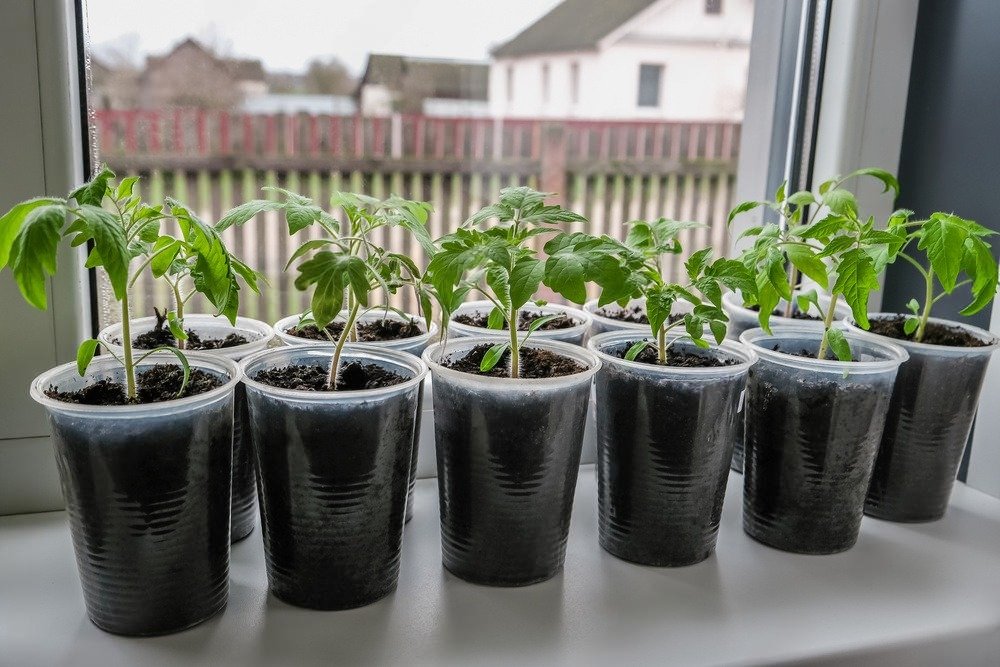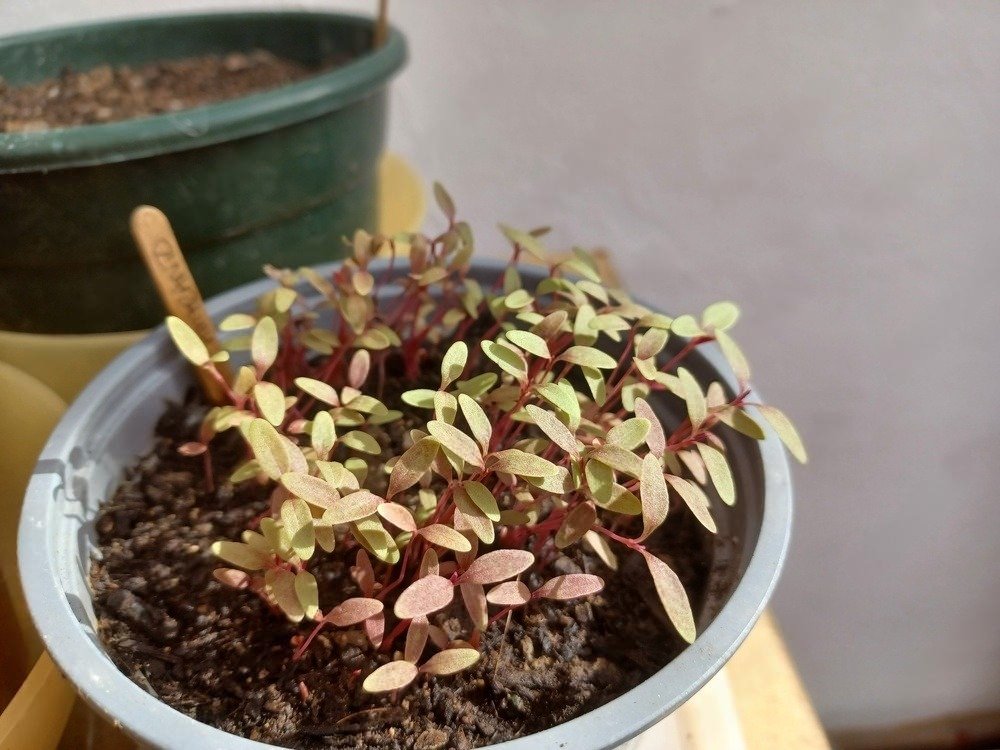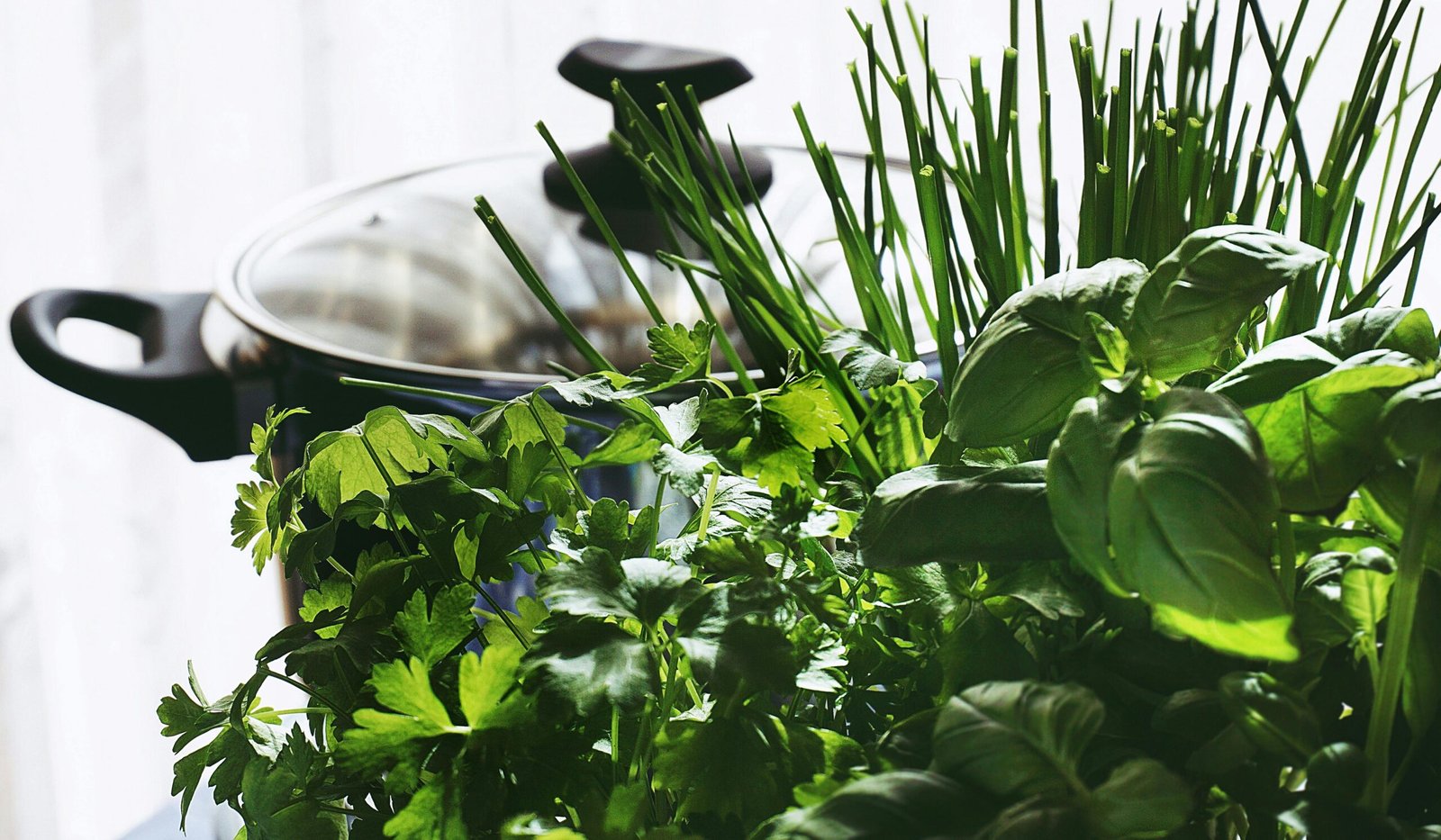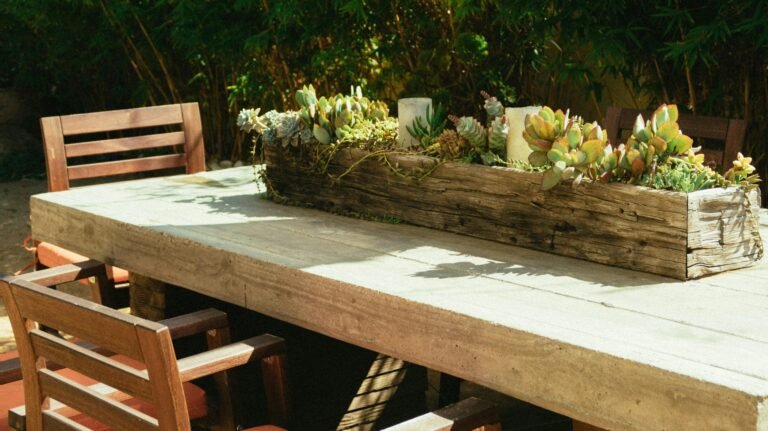You’ve killed a basil plant or two. Maybe even a sad little chilli that never made it past two inches tall. When I first tried to grow edible plants indoors, I killed two basil plants before figuring out what light they needed. Now, you’re wondering if growing food indoors is just for people with south-facing windows and botanical degrees. But you really want it to work — the idea of clipping fresh herbs while you cook, or picking your own salad leaves in the middle of winter? That’s the dream.
But right now, it feels like you don’t know where to start. What actually grows well inside? How much light do you need? And is this all going to be a waste of time (and another pot of soil)?
Here’s the truth: you can grow edible plants indoors, all year round — even in a flat with no balcony and minimal sunlight. You don’t need fancy equipment or loads of time. What you do need is a bit of guidance, some realistic expectations, and a few smart choices.
This guide gives you all that. You’ll find the best plants to start with, how to set up your indoor garden without blowing your budget, and simple steps to help your edible plants thrive — no green thumb required.
1. Why Grow Edibles Indoors?
There’s something quietly powerful about growing your own food. But when you bring that process indoors, it becomes more than just a hobby — it’s a lifestyle upgrade.
You get fresh food year-round
No more sad supermarket basil or limp lettuce. Indoor gardening means fresh herbs, leafy greens, and even some fruits and veg are always within arm’s reach — even when it’s snowing outside.
You save space (and money)
You don’t need a garden. You barely need a windowsill. Many edible plants grow happily in small pots, jars, or containers — meaning you can grow food even in a tiny flat or studio. Plus, over time, harvesting your own herbs and greens adds up to real savings.
You know exactly what you’re eating
No pesticides. No weird wax coatings. No “best before” guilt. Just food you’ve grown yourself, from seed to plate — clean, fresh, and chemical-free.
It’s satisfying
Watching something grow because you cared for it is genuinely rewarding. That little sprout pushing through the soil? That’s your win. Plus, it adds a touch of calm and green to your living space.
It’s more sustainable
Growing your own food cuts down on packaging, food miles, and waste. Even just growing a handful of herbs means fewer plastic-wrapped sprigs going off in your fridge.
Whether for health, savings, or sustainability, choosing to grow edible plants indoors offers year-round benefits.
2. Best Edible Plants for Indoors (Beginner-Friendly Choices)
Not all edible plants are suited to indoor life, but plenty are — especially if you start with the right ones. Here’s a simple breakdown to help you choose plants that actually thrive inside. Herbs, leafy greens, and compact vegetables are some of the best edible plants for indoors, even in small flats.
Herbs (great for beginners)
These are the easiest win. They don’t need deep soil, they grow fast, and they make a huge difference in your cooking. According to the Royal Horticultural Society, many herbs adapt well to indoor conditions with the right care. For anyone starting with indoor herb gardening, basil and parsley are the simplest choices.
- Basil – Loves warmth and sunlight. Great near a bright window. Basil is one of the easiest ways to start when you decide to grow edible plants indoors.
- Parsley – Tolerates lower light, grows steadily with regular trimming. I’ve had the most success with parsley on a north-facing windowsill – roof you don’t need full sun for indoor herb gardening.
- Coriander (Cilantro) – Fast-growing but short-lived; sow seeds every few weeks.
- Chives – Hardy, low maintenance, and great for constant harvesting.
- Mint – Spreads quickly, so keep it in its own pot. Thrives with moderate light. Mint spreads quickly, but in its own pot it’s a great choice if you’re learning how to grow edible plants indoors successfully.
Want to expand your indoor herb collection? Check out Top 10 Must-Have Herbs for an Easy Kitchen Herb Garden for flavour-packed options that thrive even on a windowsill.
Leafy greens (need a bit more light, but still manageable)
These grow quickly and you can harvest leaves bit by bit — perfect for salads and smoothies.
- Lettuce – Loose-leaf varieties (like Butterhead or Romaine) do well indoors.
- Spinach – Likes cooler conditions and needs decent light.
- Kale – Dwarf varieties are best for small spaces. Very resilient.
- Rocket (Arugula) – Fast-growing with a nice peppery kick.
Spinach was a game-changer for me; once I learned not to overwater, it became one of my easiest indoor crops. Spinach, kale, and rocket make it simple to grow edible plants indoors and enjoy a steady supply of greens.
Compact vegetables (need more care, but totally doable)
If you want a bit more of a challenge, try these small-space heroes. Compact vegetables like cherry tomatoes and chillies prove that you can grow edible plants indoors beyond just herbs and greens.
- Cherry tomatoes – Need lots of light and support, but worth it for the flavour. I once tried growing cherry tomatoes on a small windowsill and while they needed extra support, the taste was so much better than store-bought.
- Chillies – Thrive in warm, bright spots. Perfect for windowsills.
- Radishes – Super fast to grow (around 4 weeks) and don’t need much space. Radishes are one of the fastest crops when you want to grow edible plants indoors with quick results.
- Spring onions – Can regrow from scraps. Low effort, high reward.
Bonus: Small fruits
These need the most light and patience, but they can work.
- Strawberries – Alpine varieties grow well in containers. Look for everbearing types.
- Dwarf citrus trees – More of a long-term project, but lovely for sunny spots.
3. What You’ll Need (and What You Don’t)
You don’t need a high-tech hydroponic setup or a house full of gadgets to grow edible plants indoors. A few basics will get you started — and keep your plants happy without overwhelming you.

The Essentials
Light
Light is the make-or-break factor. Most edible plants need 6–8 hours of sunlight a day. The University of Illinois Extension’s houseplant lighting guide explains why both light quantity and quality are critical for indoor growth.
- Bright windowsills (south or west-facing are best) can be enough for herbs and leafy greens.
- Grow lights are a great backup if your space doesn’t get enough natural light. LED grow lights are energy-efficient, don’t overheat, and give plants what they need to photosynthesise indoors.
Light is the single most important factor if you want to successfully grow edible plants indoors.
Containers
Anything that holds soil and drains water will do. Don’t overthink it.
- Plant pots with drainage holes are best.
- Reused jars or tins can work too — just add small stones at the bottom to help drainage.
- Choose container sizes that match the plant’s root needs (herbs = small pots, leafy greens = medium, tomatoes = larger/deeper). Choosing the right container size ensures roots thrive when you grow edible plants indoors.
Soil
Go for a good-quality potting mix — not outdoor garden soil, which is too heavy and often full of pests or weed seeds. I learned this the hard way. The first time I reused outdoor soil indoors, I ended up with tiny bugs all over my basil. A quality potting mix is essential if your goal is to grow edible plants indoors all year round.
- Bonus: Look for soil labelled “for vegetables and herbs.”
- Optional: Add a bit of compost or organic fertiliser every few weeks for nutrients.
Water
Overwatering is the #1 reason people struggle to grow edible plants indoors.
- Water when the top inch of soil feels dry — not before.
- Make sure water can drain freely from the bottom of the pot.
- Tip: Self-watering pots can help regulate moisture levels if you travel or forget to water.
For a deeper look at natural feeding options, explore Best Organic Fertilizers for Thriving Veggies and Flowers to keep your indoor greens healthy and productive.
What You Don’t Need
- A full grow tent or hydroponic kit – Unless you’re planning a big setup, skip it.
- Fancy tools or apps – A basic watering can, a good light source, and your own observation are enough.
- Expensive fertilisers – Most herbs and greens grow well with minimal feeding. A bit of compost or general-purpose feed now and then is fine.
4. Step-by-Step Guide to Grow Edible Plants Indoors
You’ve got your setup, now it’s time to grow. Here’s a simple, no-fuss process to get your edible indoor garden going from seed to harvest. These steps double as practical indoor gardening tips for beginners, so even first-time growers can succeed.
1. Choose your plants
Start small with 2–3 herbs if you’re just learning how to grow edible plants indoors.
- Low light? Go for parsley, mint, or spinach.
- Plenty of sun? Try basil, cherry tomatoes, or chillies.
2. Pick the right containers
Use small pots (10–15 cm wide) for herbs, medium ones (20–25 cm) for greens, and larger/deeper containers for tomatoes or chillies. Make sure each has drainage holes.
3. Fill with potting mix
Use a light, well-draining potting mix. Moisten it slightly before planting — not soaking wet, just damp.
4. Plant your seeds or seedlings
- Seeds: Follow the packet instructions — usually 0.5–1 cm deep. Keep the soil moist while germinating.
- Seedlings: Gently tease out roots and plant at the same depth they were in the original pot.
5. Place them in the right light
Put your pots near the brightest window you have. Rotate them every few days so they grow evenly. If light is limited, use a grow light set on a timer for 12–14 hours a day.
6. Water wisely
Check the soil with your finger. If the top inch feels dry, water until it drains out the bottom. Don’t water if it still feels damp — soggy soil leads to root rot.
7. Feed occasionally
After about a month, start feeding your plants once every 2–3 weeks with a balanced liquid fertiliser (look for ones suitable for edibles). Herbs often need less than leafy greens or fruiting plants.
8. Harvest regularly
- Pinch herbs from the top to encourage bushy growth.
- Snip lettuce or greens leaf-by-leaf instead of pulling the whole plant.
- Pick tomatoes or chillies as they ripen to keep the plant producing.
5. Troubleshooting Common Issues
Even with the best setup, things can go wrong. The key is spotting issues early and knowing they’re fixable. Here’s how to handle the most common hiccups.

“My plant looks sad and leggy”
Cause: Not enough light.
Fix: Move it to a brighter spot or add a grow light. Leggy plants stretch toward light — so the fix is more consistent exposure. Leggy, weak plants are a common sign that beginners trying to grow edible plants indoors aren’t giving them enough light.
“The leaves are yellowing or dropping”
Cause: Usually overwatering.
Fix: Let the soil dry out a bit before watering again. Check that your pot has proper drainage — standing water at the bottom leads to root rot fast. I’ve definitely overwatered before. My parsley turned yellow in a week until I switched to a self-watering pot.
“There are tiny flies everywhere”
Cause: Fungus gnats — they love wet soil.
Fix: Let the top layer of soil dry between watering. You can add a layer of sand on top or use sticky traps to catch the adults.
“Leaves have brown, crispy edges”
Cause: Low humidity or underwatering.
Fix: Water more consistently and consider misting the leaves. Grouping plants together also boosts humidity.
“Something’s eating my plant”
Cause: Aphids, spider mites, or other indoor pests.
Fix: Wipe leaves with a damp cloth or spray with a mild solution of dish soap and water. Isolate the plant if others are nearby.
“It just… isn’t growing”
Cause: Could be too little light, poor soil, not enough nutrients, or even the wrong time of year for certain plants.
Fix: Reassess the basics — is there enough light? Are you watering properly? A small fertiliser boost might help too.
6. Success Tips to Grow Edible Plants Indoors All Year
Growing edible plants indoors isn’t just about technique — it’s also about habits, patience, and staying inspired, especially when growth feels slow or you hit a bump.
Start small
It’s tempting to plant a mini jungle straight away, but it’s better to start with 2–3 plants. You’ll learn faster, make fewer mistakes, and it won’t feel overwhelming.
Create a simple routine
- Watering: Pick 2 days a week to check moisture levels (not necessarily water, just check).
- Light: Rotate your pots every few days so they grow evenly.
- Feeding: Set a monthly reminder for light feeding.
Treat your plants like a weekly rhythm, not a daily chore.
Harvest often
The more you trim herbs and greens, the more they grow. Don’t be precious — snip and enjoy! It keeps the plants productive and reminds you why you’re doing this.
Track your progress
Take a photo every week. It’s hard to notice growth day to day, but over a few weeks, the difference is clear — and motivating.
Embrace the slow magic
Not every seed will sprout, and not every plant will thrive. That’s normal. The wins come slowly — but they do come. Celebrate the small stuff: a new leaf, a fresh sprig, a salad grown entirely in your kitchen.
7. Closing Encouragement
Here’s the thing most people don’t realise: you really can grow edible plants indoors all year round. You don’t need a garden, a green thumb, or a load of gear. You just need to start.
Every seed you plant is a small act of independence. Every sprout is proof that yes, you can do this. Whether it’s a handful of herbs on your windowsill or a tray of greens by your desk, you’re growing something useful, beautiful, and entirely your own. And when your plants start producing, take it a step further with Seed Saving for Beginners: 7 Easy & Essential Tips – it’s easier than you think to grow next year’s harvest from your own seeds.
Don’t wait for the “perfect” setup. Just begin. Pick one plant. Try. Learn as you go.
You’ve got this — and your future self (probably eating pesto from your own basil plant) will thank you.
FAQ: Grow Edible Plants Indoors All Year Round
Alex is the creator of Homely Haven, a space dedicated to simple, stylish ideas for interiors and gardens alike. With a passion for cozy living rooms, inviting outdoor spaces, and practical DIY solutions, Alex shares tips and guides that help turn any house into a true home.
From budget-friendly decorating hacks to weekend garden projects, the goal is always the same: to inspire you to create spaces that feel personal, beautiful, and welcoming. When not writing, Alex is usually rearranging furniture, sketching new garden layouts, or exploring design trends for the next project.








